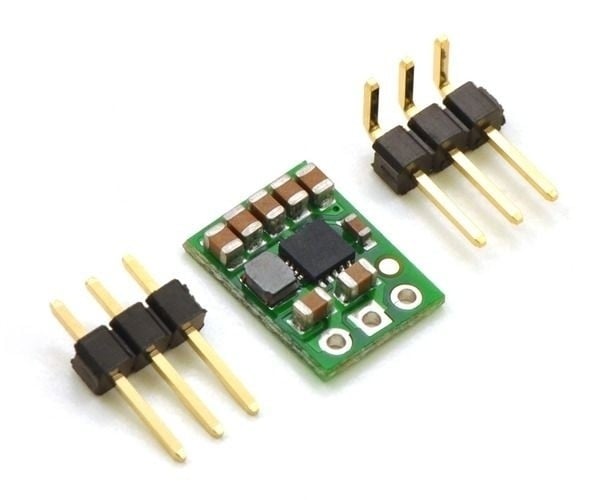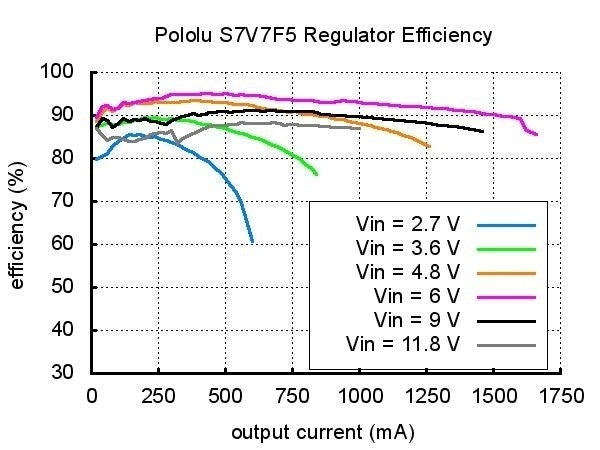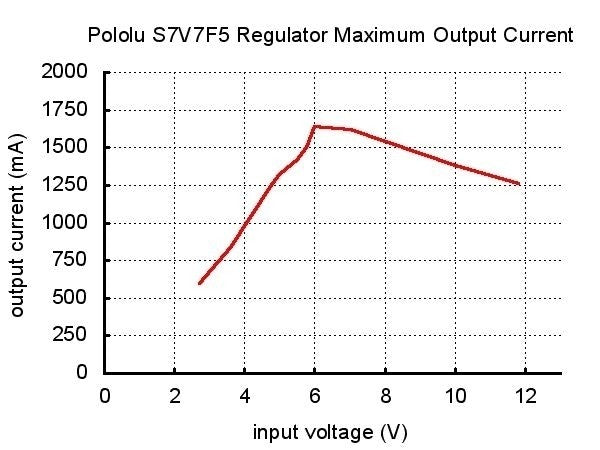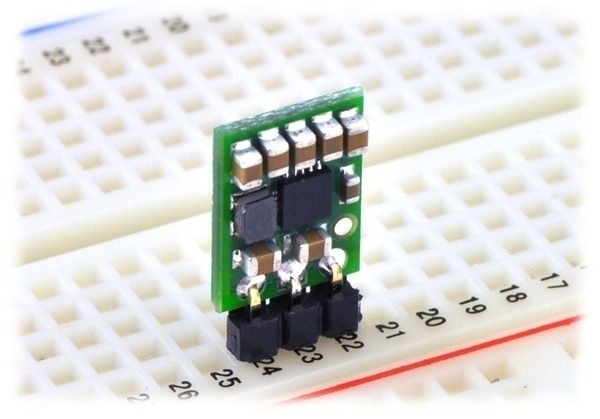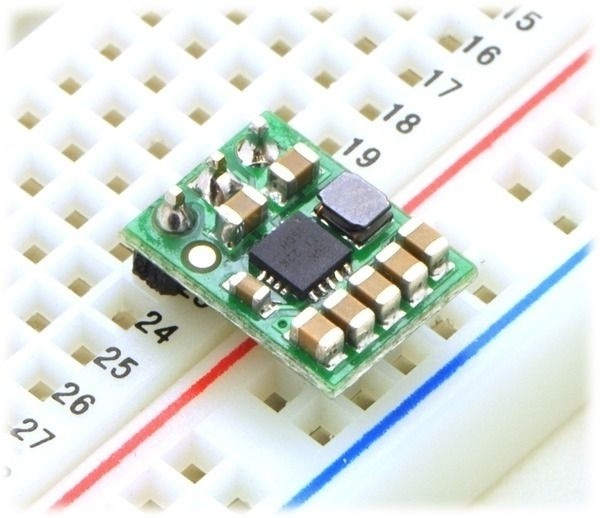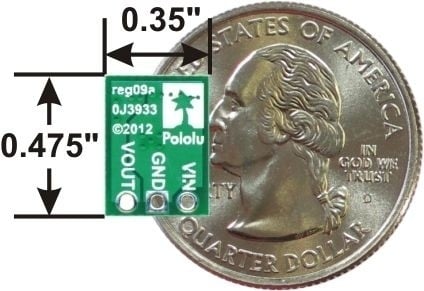Beschreibung
---
- input voltage: 2.7 V to 11.8 V
- fixed 5V output with +5/-2% accuracy
- typical continuous output current: 1 A when stepping down; 500 mA when stepping up (Actual continuous output current depends on input voltage. See Typical Efficiency and Output Current section below for details.)
- power-saving feature maintains high efficiency at low currents (quiescent current is less than 0.1 mA)
- integrated over-temperature and short-circuit protection
- small size: 0.35? × 0.475? × 0.1? (9 × 12 × 3 mm)
- Size: 0.35? × 0.475? × 0.1?1
- Weight: 0.4 g1
- Minimum operating voltage: 2.7 V
- Maximum operating voltage: 11.8 V
- Maximum output current: 1 A2
- Output voltage: 5 V
- Reverse voltage protection?: N
- Maximum quiescent current: 0.1 mA3
- 1. Without included optional headers.
- 2. When stepping down; approximately 500 mA when stepping up (depends on input voltage).
- 3. With no load. Actual quiescent current depends on input voltage.
Verschlüsselte Zahlung
Ihre Zahlungsinformationen werden sicher verarbeitet. Wir speichern keine Kreditkartendaten und haben auch keinen Zugang zu Ihren Kreditkartendaten.
Zolltarifnummer:
Herkunftsland:
Das hängt davon da, wo Sie sich befinden. Nach Übergabe der Bestellung an UPS beträgt die Lieferzeit in Deutschland ca. 2-3 Tage, innerhalb Europas ca. 1 Woche.
Wir versenden unsere Artikel mit unserem Versandpartner UPS.
Wenn wir Ihre Frage noch nicht beantwortet haben, können Sie uns kontaktieren, und wir werden uns so schnell wie möglich bei Ihnen melden.


